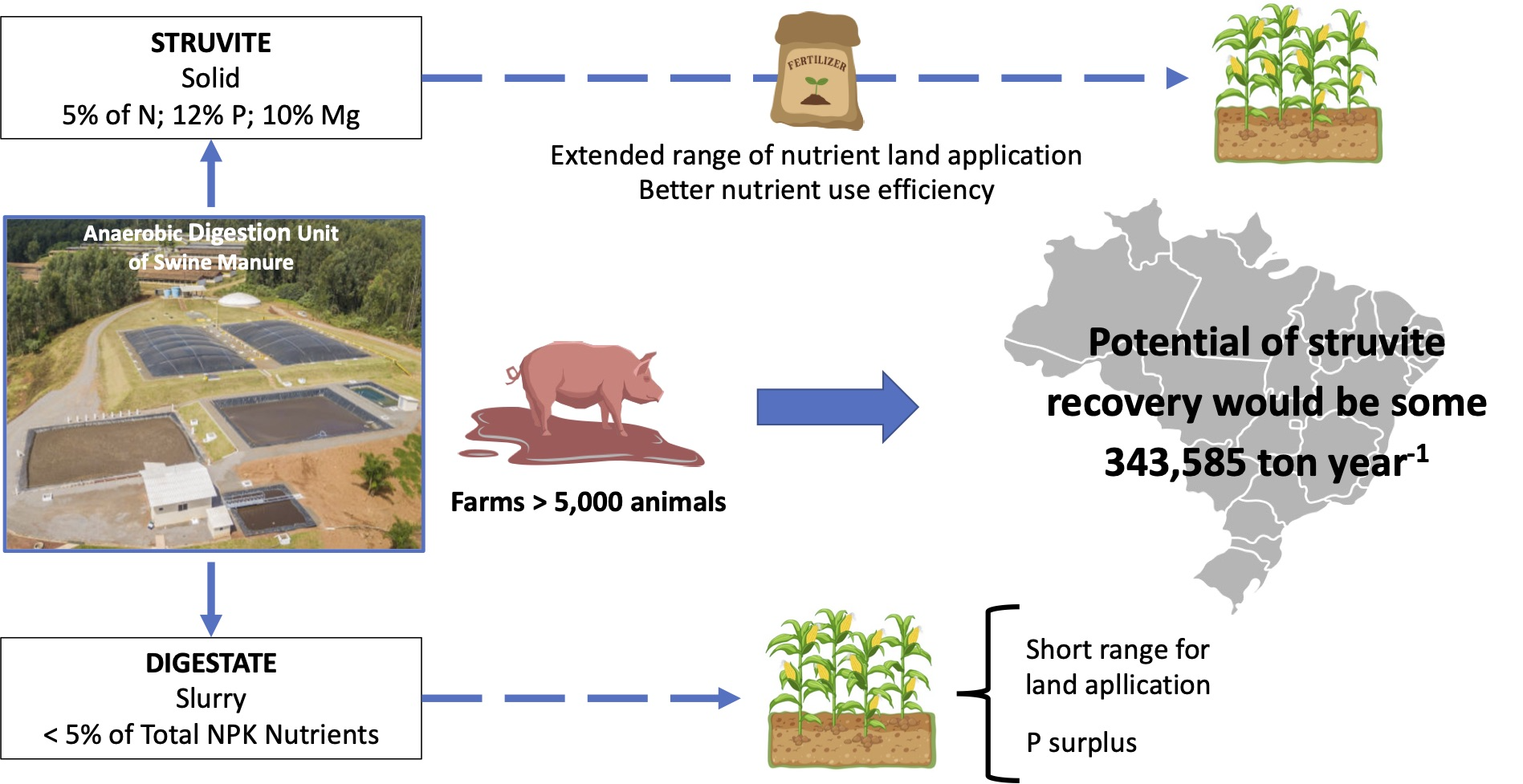Struvite potential as a slow-release fertilizer for phosphorus sustainable management in Brazilian agriculture
12/Sep/2025
ABSTRACT Phosphorus in agriculture is an essential, limited, and strategic resource, and its sustainable management is a global challenge. Phosphorus (P) recovery as struvite (NH4MgPO4.6H2O) from manures and municipal and agro-industrial wastewaters has been considered one of the most sustainable technologies, based on the circular economy, to face challenges regarding P reserves and its use for conventional fertilizer production. Struvite is a slow-release P-fertilizer (5 % N, 12 % P, 10 % Mg), which could significantly reduce the Brazilian dependency […]
Classical Methods and Calculation Algorithms for Determining Lime Requirements
20/Feb/2017
ABSTRACT The methods developed for determination of lime requirements (LR) are based on widely accepted principles. However, the formulas used for calculation have evolved little over recent decades, and in some cases there are indications of their inadequacy. The aim of this study was to compare the lime requirements calculated by three classic formulas and three algorithms, defining those most appropriate for supplying Ca and Mg to coffee plants and the smaller possibility of causing overliming. The database used contained […]
Spatially varied soil and crop attributes related to corn yield
01/Jun/2011
Precision agriculture can increase efficiency and sustainability of grain crops in Brazil, especially in support of soil and crop management. In this study the importance of spatially-variable soil and crop attributes on the variability of grain crop yield and the use of this information to improve management decisions was examined. The study used data from the 2005/6 corn growing season of a 18 ha commercial field on a clayey Latossolo Bruno (FAO: Ferralsol). Soil (0-0.10 m layer) and crop properties […]
Cation dynamics in soils with different salinity levels growing irrigated rice
01/Dec/2010
Salinity levels in soils of the Outer Coastal Plain of Rio Grande do Sul, Brazil, can be high, due to excess of Na in the irrigation water, evapotranspiration and soil development from marine sediments. The cultivation of irrigated rice could be an alternative, since ion uptake as well as leaching by the establishment of a water layer could mitigate the effects of soil salinity. This study aimed to evaluate the dynamics of basic cations in the solution of Albaqualf soils […]
Accumulation of oxalic acid and calcium crystals in eucalypt ectomycorrhizas. I- oxalic acid production and nutrient concentration in fine lateral roots colonized with ectomicorrhizal fungi
01/Jun/2009
Eucalypt is highly efficient at growing in nutrient-poor soils, but little is known about the role of ectomycorrhizas and organic acids in nutrient uptake and storage under field conditions. Oxalic acid production and its relationships with Ca, P, K, and Mg concentrations were evaluated in the ectomycorrhizas and fine lateral roots of a 2.5 year-old Eucalyptus grandis x Eucalyptus urophylla hybrid grown in a mountainous area at Viçosa, MG, Brazil. Oxalic acid concentrations were also evaluated in rhizospheric, non-rhizospheric, and […]
Effect of liming and ammonium sulfate in cotton. II – Concentration of cations and anions in the soil solution and plant nutrient uptake
01/Jun/2006
In no-tillage systems lime is applied on the soil surface to avoid soil mobilization. Nitrogen fertilization adds anions that can increase the solubility of basic cations of the soil due to formation of ionic pairs. The objective of this study was to characterize the dynamics of anions (SO42- and NO3–) and cations (NH4+, Ca2+, Mg2+ and K+) in the soil solution, and the nutrient uptake by cotton plants subjected to different lime application forms and ammonium sulfate fertilization, with straw […]
Effect of liming and ammonium sulfate on cotton. I – Cation and anion transport in the soil
01/Jun/2006
Applying lime on the soil surface in soils managed under no-tillage has caused an excess of basic cations in the most superficial layers of the soil profile. On the other hand, subsoil acidity is considered a constraint to the development of deep plant roots. The objective of this study was to evaluate Ca2+, Mg2+, NO3– and SO42- leaching in the soil profile as affected by liming and top dressing nitrogen fertilization in cotton, grown with straw cover on the soil […]
Dynamics of surface liming in a typic haplorthox
01/Apr/2005
Alterations in soil chemical properties after liming depend on the frequency of soil sampling and rainfall. This study evaluated such alterations in a Typic Haplorthox (Rhodic Ferralsol) with a sandy-loam superficial layer. The experiment had a completely randomized block design, with four dolomitic lime rates (0, 2.4, 4.8, and 7.2 t ha-1) and three replicates. The experiment was carried out in Alto Parana in northwestern Parana state (southern Brazil). Lime was broadcast on the soil surface over Brachiaria decumbens grass residues in-between […]
Changes in chemical soil characteristics, nutritional state, and agronomic characteristics of corn plants due to lime application forms under no-tillage
01/Feb/2003
Lime application on the soil surface in no-tillage systems, without incorporation, has not been effective in certain edaphic and climatic conditions for the correction of acidity or for calcium and magnesium supply to plants. Searching alternatives for limestone application without the conventional tilling and harrowing operations, this study tried to evaluate the efficiency of different lime application forms for the chemical soil attributes, nutritional state, and agronomic characteristics of corn crop. A randomized block design with split-plots and three replications […]
Liming under no-tillage and effects on soil acidity, soil nutrient availability and corn and soybean yield
01/Mar/2001
A field experiment was conducted in the state of Paraná, Brazil, to evaluate the effect of liming on soil acidity, soil nutrient availability and yields of maize and soybeans on a Red Latosol (Oxysol), which had been cultivated for three, six and nine years under no-tillage (NT). Lime was broadcasted to the soil surface in four rates- 0, 33.3, 66.7 and 100% of the amount calculated to increase the soil base saturation (V%) to 70%; an additional treatment consisted of […]

